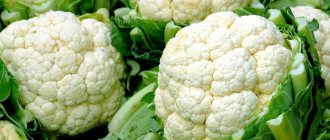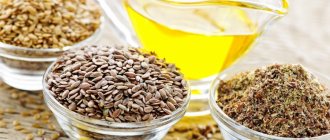Breastfeeding implies some restrictions in the mother’s diet, but at the same time, the diet should be as healthy and varied as possible. Such a menu will give the mother the strength to care for the baby and restore the body after pregnancy, and for the baby it will be a source of additional vitamins and microelements that will pass into breast milk.
Lentils are very useful during breastfeeding, but to eliminate risks, you need to prepare them correctly and introduce them into the diet of a nursing mother.
What is the benefit of the product
Consumption of lentils benefits the body of a woman and a newborn:
- it contains isoflavones - a means of preventing breast cancer;
- prevents anemia;
- strengthens the immune system;
- accelerates the elimination of toxins and waste;
- reduces the level of bad cholesterol in the blood;
- normalizes the functioning of the heart muscle, ensures the prevention of cardiovascular diseases;
- stimulates metabolism;
- ensures the formation of new cells, accelerates the growth of nails and hair.
The product strengthens the child's immunity and replenishes the level of iron in the blood, preventing the development of anemia. Lentils can be introduced into the diet of people who are not predisposed to constipation, then it will only bring benefits by optimizing the removal of toxins and waste products from the body.
The product will be harmful if there are such violations:
- the child's predisposition to colic;
- dysbacteriosis;
- urolithiasis in the mother;
- biliary dyskinesia.
Some sources do not recommend consuming cereals for joint diseases.
Benefits of lentils for nursing mothers
You can often hear advice that legumes are not recommended for breastfeeding, as they cause increased gas formation and aggravate the already difficult period of infant colic. This is true. But not all children are prone to flatulence, so there is no point in all mothers giving up this nutritious and healthy product.
Benefits of Lentils:
- When grown, the plant does not accumulate pesticides and harmful chemicals at all, so eating lentils is completely safe for both nursing mothers and babies.
- Cereals are rich in vegetable protein, which is perfectly absorbed by the body and is an excellent building material for tissues.
- Lentils do not lose their beneficial properties even after prolonged heat treatment.
- The calorie content of the cereal is moderate (111 Kcal per 100 g), but due to the fact that it is very filling, you need very little of it for a full portion. Therefore, lentils in the diet will not affect the total daily caloric intake at all and are allowed even for those people who are trying to lose weight.
The benefits of cereals are due to their rich vitamin and mineral composition:
- Iron helps restore normal hemoglobin levels and prevents anemia, which is important for women who have given birth.
- Calcium strengthens the skeletal system and makes muscles elastic.
- Folic acid has a positive effect on the nervous system.
- Potassium has a positive effect on the cardiovascular system.
- Fiber stabilizes the gastrointestinal tract, rids the body of waste and toxins.
- Lysine is a powerful immunomodulator.
- Isoflavone is known as a substance that prevents the development of breast cancer.
Lentils are very useful for diabetes, as regular consumption can reduce sugar levels, as well as “bad” cholesterol in the blood.
Can a nursing mother eat lentils? Yes, sure!
It is necessary to monitor the serving size so that it is not too large, as excess fiber can cause colic and gas in the baby
Can I eat lentils while breastfeeding?
It is known that legumes and lentils can increase gas formation in the intestines, so their consumption is not recommended during breastfeeding, namely in the first 2-3 months. Periodic use of the product by the mother can aggravate the process of the child’s adaptation to non-intrauterine nutrition, causing flatulence. It should be taken into account that not all babies are prone to gas and colic, so it is not always necessary to refuse to consume a product that is valuable to the body.
Attention! In the postpartum period, many women are faced with the need to get rid of excess weight gained during pregnancy. Lentils will help with this. Due to its high nutritional value, it allows you to saturate the body for the whole day. For diet purposes, it is not recommended to use it at night.
Lentils, like all legumes, can bring not only benefits to the human body, but also significant harm, therefore, when consuming them during breastfeeding, the main rule is moderation. Overeating will lead to bloating and active flatulence in both mother and child. Nutrition experts recommend introducing the product into the diet of a nursing mother - gradually, starting with a few spoons. The reaction manifested in the infant must be controlled. Due to the product's ability to cause constipation, it is not recommended for women with anal fissures and postpartum hemorrhoids.
Consequently, the product can bring not only benefits to the body of the mother and child, but also harm, therefore its use must be deliberate. The product should be introduced into the diet gradually, starting with small portions; if its intake has consequences, it should be postponed until a later time.
Recommended consumption rates
If a woman ate lentils during pregnancy, then introducing them into the diet after the birth of the child will not be particularly difficult. Caution should be exercised if this product is new to both mother and baby.
List of main recommendations:
- Cereals are not an allergen, so they can be included in the menu when the child is 2-3 months old. At this stage, it should be used to season the soup, but not eaten in its pure form.
- It is better to introduce a new dish in the morning so that you can observe the child’s reaction throughout the day.
- The consumed portion is no more than 25 grams of dry cereal.
- Bean dishes can be on the menu no more than 3 times a week.
When preparing a dish to eat during breastfeeding, the lentil grains need to be washed thoroughly to clean water and sorted, removing all spoiled elements. Green and black lentils need to be soaked in water overnight and only then cooked.
Rules of use
Lentils are a food product that has several types. Each variety has its own special qualities and requires special heat treatment.
- Red varieties are best suited for purees and salads.
- The brown variety makes tasty and healthy soups.
- The green and black varieties are not overcooked; they are used to prepare a side dish.
- The yellow variety is universal; soups, purees, and side dishes are prepared from it.
Important! A serving of lentils supplies the body with 90% of the daily requirement of folic acid.
How to properly introduce it into your diet
You need to start eating cereal in its pure form or as part of other complex dishes gradually. Legumes should not be introduced into a woman's diet until the baby is 2 months old - this is a general rule. Getting to know the product at this point is possible if the woman regularly consumed lentils before giving birth. If it is introduced for the first time, it is better to wait up to 3-4 months.
The following table will help you understand how to use the product:
| Child's age | Is it possible | In any form |
| 2 months | Allowed if the mother used the product regularly before pregnancy. | Can be used as a dressing for soup with a light broth or introduced into the menu little by little, literally 10 grains at a time. |
| 3 months | ||
| 4 months | Allowed, with volume restrictions | The daily norm for a woman is no more than 25 grams of dry cereal, no more than once a week. |
| 6 – 8 months | Allowed, subject to high-quality heat treatment in the form of different dishes | You can eat lentils for breakfast and lunch, prepared with various methods of heat treatment. |
| 8 – 12 months | Starting from 8 months, lentil soup can be included in the infant’s menu | The product is started with 5 grams of product per day, if gastrointestinal disturbances are not observed, the volume can be increased |
If, after the first tasting of cereal, a child has a negative reaction in the form of any digestive disorders, further consumption should be postponed. The introduction of cereals into the diet should be postponed for at least 1 month.
Attention! A child can only be given a fully boiled or stewed product. Hard lentils will not be able to be absorbed by the child’s body.
Contraindications for consumption
The list of contraindications for the use of lentils is limited, but it is not recommended for use for the following diseases:
- arthritis;
- arthrosis;
- gout;
- intestinal dysbiosis;
- uric acid diathesis;
- inflammation of hemorrhoids.
For gastrointestinal diseases, for example, gastric ulcers and gastritis, the product can only be consumed in puree form. This preparation method improves the digestibility of the product and reduces the risk of reactions. In case of diseases of the gastrointestinal tract in a child, the product can be introduced into his diet after a year, with the permission of a nutritionist.
Lentils: An Ancient Source of Nutrients
Lentils are one of the oldest products that not only survived the ancient Egyptians, ancient Greeks and Romans from the times of the empire, but also quite successfully reached the present day, and has also gained considerable popularity in the wake of a healthy lifestyle, vegetarianism, paleo diets and other nutrition systems. Archaeologists discover lentil seeds during excavations of Bronze Age settlements; lentil soup was served at the table of Ramses II, and bread was even placed in crypts. The Greeks, Romans, Hindus and residents of Asian countries have long been familiar with lentils, since they alone can replace many dishes due to their unique composition. In Rus', they became acquainted with this product in the 14th century, but somehow did not get into it (apparently thanks to the already poor diet). Today, this plant is grown in Australia and Canada and eaten throughout the world. Let's figure out why these grains are so useful.
Lentils are one of the oldest crops
Lentil seeds differ from legumes in their unique ratio of proteins, fats and carbohydrates . 100 grams of lentils contain 295 kcal, of which 60% are carbohydrates, 30% are proteins and 10% are fats. This is an almost ideal ratio for your entire daily diet! Athletes working to build muscle adhere to the following ratio: proteins - 30-40%, carbohydrates - 30-50%, fats - 10-20%, so for an ordinary working person, lentils can cover the daily requirement of nutrients.
In addition, lentils contain B vitamins:
- B3, also known as nicotinic acid, thanks to which the body can absorb vitamin C;
- B1, also known as thiamine, has a beneficial effect on the functioning of the nervous system and heart, and also improves the functioning of the gastrointestinal tract;
- B2 is a unique riboflavin that is involved in the production of red blood cells, without it problems with the thyroid gland and reproductive function arise and thanks to which our hair, skin and nails look healthy.
Lentils are also rich in macroelements . It contains copper, which is especially valuable for the female body, as well as phosphorus, potassium and calcium, magnesium, iodine, zinc, iron, manganese and silicon. Moreover, surprisingly, after heat treatment, most of all useful substances are preserved. Even more surprising is that the condition of the soil is not reflected in lentils: it simply does not absorb harmful substances from it!
Thanks to the large amount of fiber, lentils perfectly cleanse the intestines, help cope with constipation and have a beneficial effect on the functioning of the stomach. Lentil dishes improve metabolic processes, which is especially pleasing to those losing weight and watching their weight. The regular presence of lentils in the menu helps strengthen blood vessels, reduce the amount of glucose in the blood, and is also an excellent prevention of liver disease and kidney stones. It is believed that lentil soups and breads even reduce the risk of cancer, in particular breast tumors. Lentil flour, by the way, can also be used externally: mixed with yolk, it speeds up the healing process of wounds, and with oil it helps remove the consequences of burns. It is difficult to overestimate the benefits of lentils, however, nursing mothers have their own biochemistry and their own rules, which we will try to understand.
How to choose and store lentils correctly
The crop can be sold in bulk and in packaging. When choosing, you need to pay attention to the safety of the packaging. If it is torn or opened, you should not buy such cereals.
The following indicators indicate that the cereal is of high quality:
- the cereal should be crumbly, the grains should not stick together;
- if it is contained in a bag, it must be sealed, and there should be no moisture inside;
- the grains must be the same size;
- the composition of the packaging (if it is transparent) needs to be checked for debris;
- the mixture should not contain foreign particles;
- loose cereals should give off the smell of young walnuts.
You should refuse the purchase if:
- there is dust on the grains;
- they have different sizes, crushed;
- the packaging is damaged;
- the beans stick together into a lump;
- it's expired.
Expired cereal will not benefit a nursing mother or her newborn. After the specified period, you cannot eat it, the product will be harmful. Fungi can multiply on the surface of the kernels, which can subsequently colonize the human gastrointestinal tract.
When storing kernels of different varieties, it is prohibited to mix them. After opening the package, store the composition in a dry place, tightly covering the cereal. Before cooking, you need to check for bugs; if they are present, the lentils are no longer suitable for use.
Features of cooking different varieties of lentils
Features of preparing beans, depending on the variety, are discussed in the table:
| View | Description |
| Red | It boils quickly and does not require pre-soaking. Use in soups, side dishes and purees. It holds its shape perfectly and can be stored within a day after cooking. Used to create snacks and salads. |
| Brown | It is aromatic, has a pleasant taste of unripe nuts, and is used for any dishes. Pairs well with seafood. |
| Black | It is well accepted by the body, is completely and quickly absorbed, there is some spice in the taste, therefore it is not suitable for baby food. |
| Green | It differs in the speed of cooking, but in order for it to be completely boiled, it must first be soaked. |
Attention!
It is first recommended to introduce green or brown lentils into the diet of a child and a nursing mother. Red should only be used as a seasoning for soup.
Beneficial features
Lentil dishes provide energy and enrich the body with microelements, vitamins and minerals.
The grains of this culture are rich in:
- group of vitamins B,
- vitamins E, D and K,
- magnesium and iron, iodine and calcium, zinc and copper, selenium and other minerals necessary for the body.
See also
Description of types and varieties of lentils: green, red and orange, their differences and differences
Read
These substances contribute to the good condition of bones, teeth and hair, and are actively involved in the development of the child. The benefit of the product is that it suppresses pathogenic microbes, removes harmful substances from the body, lowers blood sugar and prevents iron deficiency.
Attention! Nitrates never accumulate in lentils, so they are safe and can be given to nursing women and children in the form of porridges and purees. .
Lentil recipes
Lentils are not the most common grain, so many people do not know that several dozen dishes that differ in taste and health benefits can be prepared using them. It is included in side dishes and appetizers, salads. Preparing such dishes is very simple. The taste depends on the type of lentils used and the quality of its preparation - this point needs to be taken carefully.
Red Lentil Soup
Chicken soup with an unusual filling in the form of lentils is a great way to diversify your diet. To prepare it you need the following components:
- chicken breast – 250 g;
- fresh zucchini – 1 pc.;
- red lentils – 150 g;
- carrots – 1 pc.;
- potatoes – 2 pcs.;
- onions – 1 pc.;
- salt - to taste;
- greenery.
Is it possible to eat carrots while breastfeeding? Find out in this article.
Boil the chicken fillet until tender, discarding the first broth. After boiling, remove the foam with a slotted spoon and place the diced potatoes into the pan. Place the remaining vegetables in the pan, and after 10 minutes add the lentils. The soup needs to be salted and boiled for about 7 minutes. You need to taste the beans to see if they are done. The finished soup should be sprinkled with herbs.
And another delicious video recipe on how to make lentil soup.
Green lentil salad
Lentil salad is easy to prepare with simple ingredients. For this you will need:
- green lentils – 100 g;
- green apple – 1 pc.;
- dried apricots – 4 pcs.;
- feta – 100 g;
- raisins – 50 g;
- parsley;
- salt;
- lemon juice;
- parsley.
Can you eat apples while breastfeeding? We previously wrote about this here.
Boil the lentils until tender, cut the apples without peel into cubes and fry in olive oil. Mix the fried fruit with dried fruits, pour in lemon juice and leave for 5 minutes. Chop the parsley and feta cheese and add to the apple along with the cooked lentils. Mix all components thoroughly.
Lentil casserole
Making healthy lentil casserole is very simple:
- lentils should be mixed with boiled potatoes in a 1:1 ratio;
- Grind the resulting mixture in a blender;
- add onion, sautéed until translucent;
- add a couple of tablespoons of wheat flour;
- mix the ingredients and place on the bottom of a mold greased with vegetable oil.
Bake at 180 degrees for 30 minutes.
Lentil pate appetizer
To prepare the dish, boil the lentils in advance and grind them in a blender. Add olive oil and a few drops of fresh lemon juice, spices and salt to taste. The snack can be spread on bread or toast, or served in tartlets. Despite its simplicity, the dish turns out to be very satisfying and tasty.
Pilaf with chicken and lentils
To prepare pilaf, carrots are grated and onions are cut into small cubes. Fillet and vegetables are fried in vegetable oil. In a saucepan, you need to boil the lentils until tender, drain the water from them, and place them in a colander. Transfer the lentils to the fried fillet and vegetables. You can add boiled rice to the dish. This dish will benefit a pregnant woman because it is nutritious and balanced.
Red lentil cutlets
To make red lentil cutlets, soak the beans in water for several hours and strain through a colander to remove the water. Chop the onion and lightly fry in a frying pan, grind the lentils in a blender. The mass should turn out mushy. The components are connected to each other. Add black pepper and salt to taste; the cutlets should be moderately spicy. Breadcrumbs help thicken the mixture. Place the cutlets in a frying pan with heated vegetable oil and fry until golden brown.
Another delicious recipe for lentil cutlets in the video recipe.










